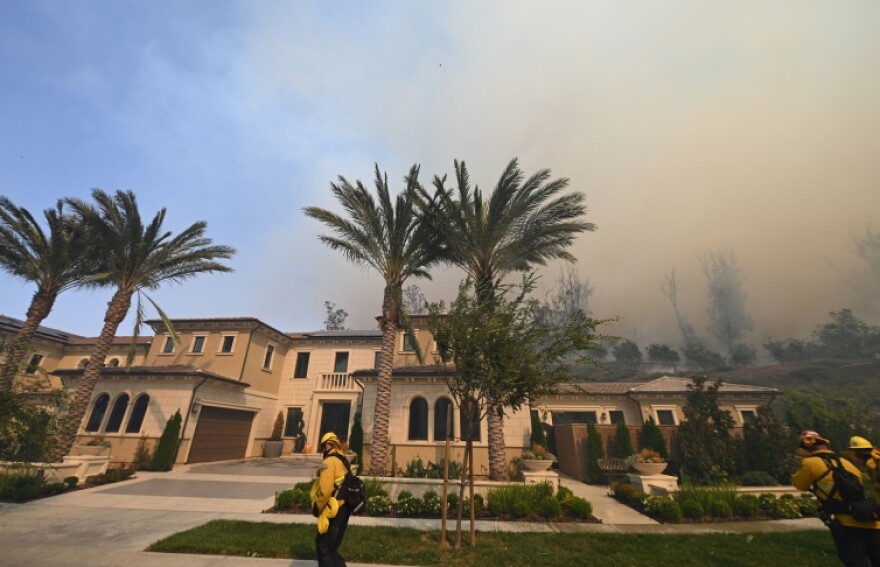Truth matters. Community matters. Your support makes both possible. LAist is one of the few places where news remains independent and free from political and corporate influence. Stand up for truth and for LAist. Make your year-end tax-deductible gift now.
The Silverado Fire Area Burned Not That Long Ago

The same area of Orange County that’s burning in the Silverado Fire today burned 13 years ago in what was described as one of the county's "most disastrous" wildfires in decades.
The Santiago Fire broke out on October 21, 2007 and consumed more than 28,000 acres, destroyed 42 structures, and caused an estimated $28 million in damages.
“That was a watershed event in Orange County’s history,” said Mike Rhode, a fire consultant and former Battalion Chief of the Orange County Fire Authority, who was on the 2007 incident.
“The fire is actually replicating fire behavior that we experienced during the Santiago Fire in [2007]. It started very close to the same origin under very similar wind conditions,” he said.
“That’s a known high wind location in Orange County, so it’s a place where the fire gets an accelerated start.”
Rhode predicts that as the fire comes down the mountain towards Irvine, the front will expand towards both North Tustin in the northwest and Portola Hills in the southeast.
That doesn't mean the fires will play out in the exact same way. There are some key differences between this time and last:
- This time around, response times and reinforcement requests have been much faster than a decade ago, when it took three days to get outside help, according to Rhode. In 2007, firefighting resources were stressed because of a particularly awful October.
- More structures are threatened this time around as developments have expanded into the hills. However, homes built after 2008 in high risk areas are supposed to be more fire resistant due to updated building codes.
- The brush on the mountains is much less dense, as it hasn't yet recovered from the Santiago Fire. That said, the grasses and smaller fuels that've popped up tend to burn fast, resulting in speedy fire spread.
Our news is free on LAist. To make sure you get our coverage: Sign up for our daily newsletters. To support our non-profit public service journalism: Donate Now.







